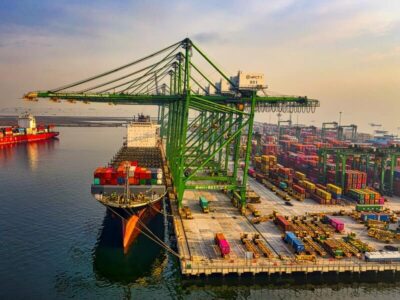 Veteran forwarders report a pricing market increasingly like the “Wild West” as the trans-Pacific peak season approaches. Higher demand has pushed up spot and contract rates and the cost of chartering container ships, with speeds reaching well over $100,000 per day.
Veteran forwarders report a pricing market increasingly like the “Wild West” as the trans-Pacific peak season approaches. Higher demand has pushed up spot and contract rates and the cost of chartering container ships, with speeds reaching well over $100,000 per day.
Forwarders believe shippers of lower-value cargo and those with low margins are priced progressively out of Asia-US spot container freight rates, which have been quoted as high as $26,000 per FEU. Some carriers are prioritizing higher-paying import cargo and are rolling some contracted freight unless premiums are paid.
Both forwarders and shippers are frustrated by the dilution of so-called premium services, ranging from really guaranteeing equipment and drayage to just raising odds but not guaranteeing cargo is loaded as booked. Conversations with five seasoned forwarders, one of whom requested anonymity, revealed growing concern about how chaotic the coming months will be. It also found that, while pricing pressure may reduce, forwarders believe that rates will stay much higher than pre-pandemic levels.
“The pricing is dynamic,” said Mike Piza, Apex Logistics International’s vice president of corporate business development. “If you book four to six weeks in advance, you won’t get a terrific rate, but you’ll get a respectable one. However, if you’re attempting to book three to four weeks in advance, it’s almost like an auction house as the departure date approaches.”
According to the Drewry World Container Index, average charges from Shanghai to Los Angeles exceeded $9,000 per FEU as of late July. A year ago, the identical container cost $1,350 to ship. According to pricing sheets supplied with JOC.com by forwarders and in interactions with forwarders and carriers, it costs shippers $2,000 to $7,000 per FEU only to guarantee space. Runners are announced new surcharges ranging from $1,000 to $5,000 as the conventional high season approaches and cargoes delayed by Southern China congestion arrive at ports.
“You can call them GRIs (general rate increases), PSSs (peak season surcharges), value-added surcharges, or whatever you like, but they all do the same thing: they keep rates up,” said Duncan Wright, president of forwarder UWL.
Forwarders’ cost of capital has risen, but their profits have remained relatively unchanged, according to Piza. Apex was paying $1,500 per container to the West Coast before the pandemic. Before the Asia surge exceeded maritime capacity and taxed US ports; now, the same service costs between $10,000 and $14,000.
Container lines’ limits on inland point intermodal — exacerbated by western US railroads’ temporary suspension and metering of services — have prompted responses that would have been inconceivable a year ago, including transloading between Seattle and Los Angeles. It used to cost $5,000 to reload products from ocean containers onto trucks; today, it costs more than $20,000.
According to James Caradonna, general manager of pricing, Americas, at M+R Forwarding and MCL-Multi Container Line, “we can’t fully analyze the evolution of high freight rates unless we acknowledge that many shippers are responsible for the rate increases as well,” in that some shippers are driving rates up because they can afford to pay more while others can’t. He went on to say that some carriers raise rates by adding charges every month, while others aren’t as aggressive with price hikes.
Carriers are enforcing stricter booking requirements.
Shippers aren’t the only ones who are under duress. According to Trond Prestroenning, chief executive for the Americas at Germany-based forwarder Fr. Meyer’s Sohn, carriers will not provide weekly minimum quantity obligations within a contract if the cargo isn’t delivered for two weeks in a row. As new trans-Pacific service contracts went into force in the spring, carriers began adding weight allocations to ship bookings, he said. He said that customers who use forwarding services are now paying later than before the outbreak, necessitating a quadrupling of collection attempts. While forwarder margins have remained stable at 8 to 15%, “our workload is five times to transfer one booking,” according to Prestroenning.
“The demand is enormous. Every day, we receive calls from shippers requesting our assistance, and we have to deny many of them. It’s not that I won’t transport your box for ridiculous premiums; it’s that I can’t afford that premium space,” he explained, adding that large importers are even chartering their vessels to shore up their supply lines.
Because so many vessels are being chartered and new Chinese regional operator entrants are calling the US West Coast, Wright predicts that the next few months will be reminiscent of Dunkirk, when British forces were evacuated from France during World War II an armada of warships and small, private boats. For direct importers, UWL has hired multiple breakbulk vessels, with a total of 25 scheduled.
In terms of securing chartering and terminal agreements, “it’s all about relationships again,” Wright said, adding that UWL’s breakbulk experience and capabilities make it easier to provide shippers with a single point of service by securing charters under the vessel owner’s terms and handling stevedoring. On the West Coast, “everyone needs berth access,” he said.
According to Caradonna, as non-vessel-operating common carriers (NVOs) become more innovative, there has been a “dilution” in premium services as some carriers enter the market with new options but cannot guarantee load space, equipment, priority boarding, and door delivery. He claimed that certain pages had done a better job of ringfencing capacity for contracted cargo. In contrast, others have aggressively chased a more significant proportion of premium spot cargo at service expense.
“The limits between what constitutes premium and what does not have been blurred, and there is where we see price gouging,” he said.
Capacity is in trouble.
Nonetheless, Caradonna believes carriers should be commended for adding as much capacity as possible. In the third quarter, container lines increased trans-Pacific capacity by 32 to 34 percent over the same period a year ago. According to Sea-Intelligence Maritime Analysis, around 25% of such power will be absorbed by port congestion in the US and Asian ports.
Wright claims that the carriers canceled too many sailings in June and July 2020, resulting in the current fare market. He thinks it’s fantastic that carriers are making money after years of losses. Still, he wonders if they’ll be able to self-regulate so that capacity isn’t artificially reduced too much.
Container lines claim that they underestimated Asia’s import rebound last year. Significant delays, such as the Suez Canal blockade and pandemic-related port congestion in Southern China, have restricted their working capacity. On the other hand, Wright was skeptical, claiming that carriers had previously recovered from significant supply chain disruptions.
“I know for $100,000 I can get any box I want on a ship. When I’m informed there’s no room, how is that possible?” Wright remarked. “‘Well, there is if you pay for it,’ says the narrator. We know where we’re sitting at the end of the day.”
He went on to say, “There isn’t any structure remaining.” “This is the Wild West,” says the narrator. It’s simply a financial situation. The contractual structure does not support non-vessel-operating common carriers, and thus small to mid-tiered shippers.”
Customers have informed Wright that they would ride it out this year, but they are unsure if this is the “new normal” for container shipping prices, even as import demand declines. “We keep hearing it’s only temporary, but it’s no longer temporary. He described it as “the new normal.” “I’m not sure where it goes. Customers are no longer screaming; they are crying.”
Prestroenning believes that rates will eventually subside but that they will never return to pre-pandemic levels because carriers have “smarted up” and “been surgical in adding and eliminating capacity.”
Piza believes that the current chaos will benefit NVOs in the long run. He stated, “The carriers have lost some trust with beneficial cargo owners.”
Synopsis based on The Journal of Commerce online’s article


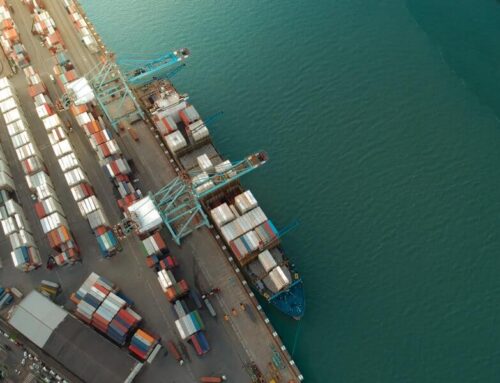
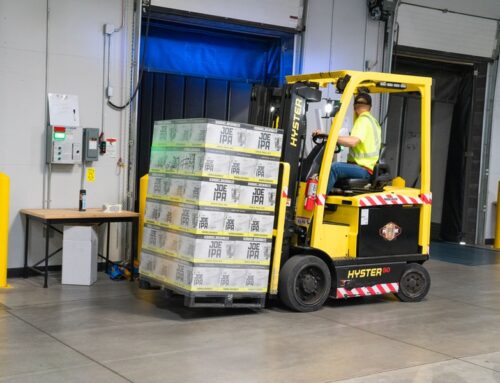
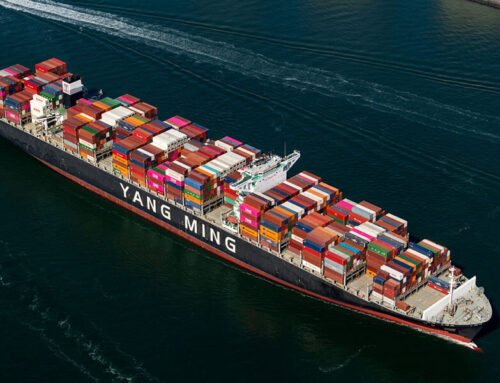
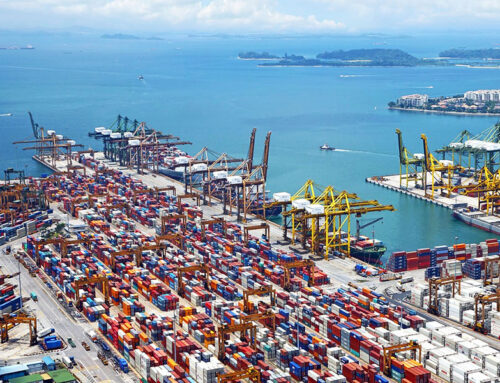
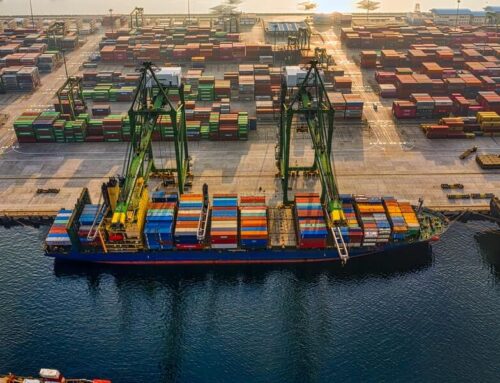
Leave A Comment